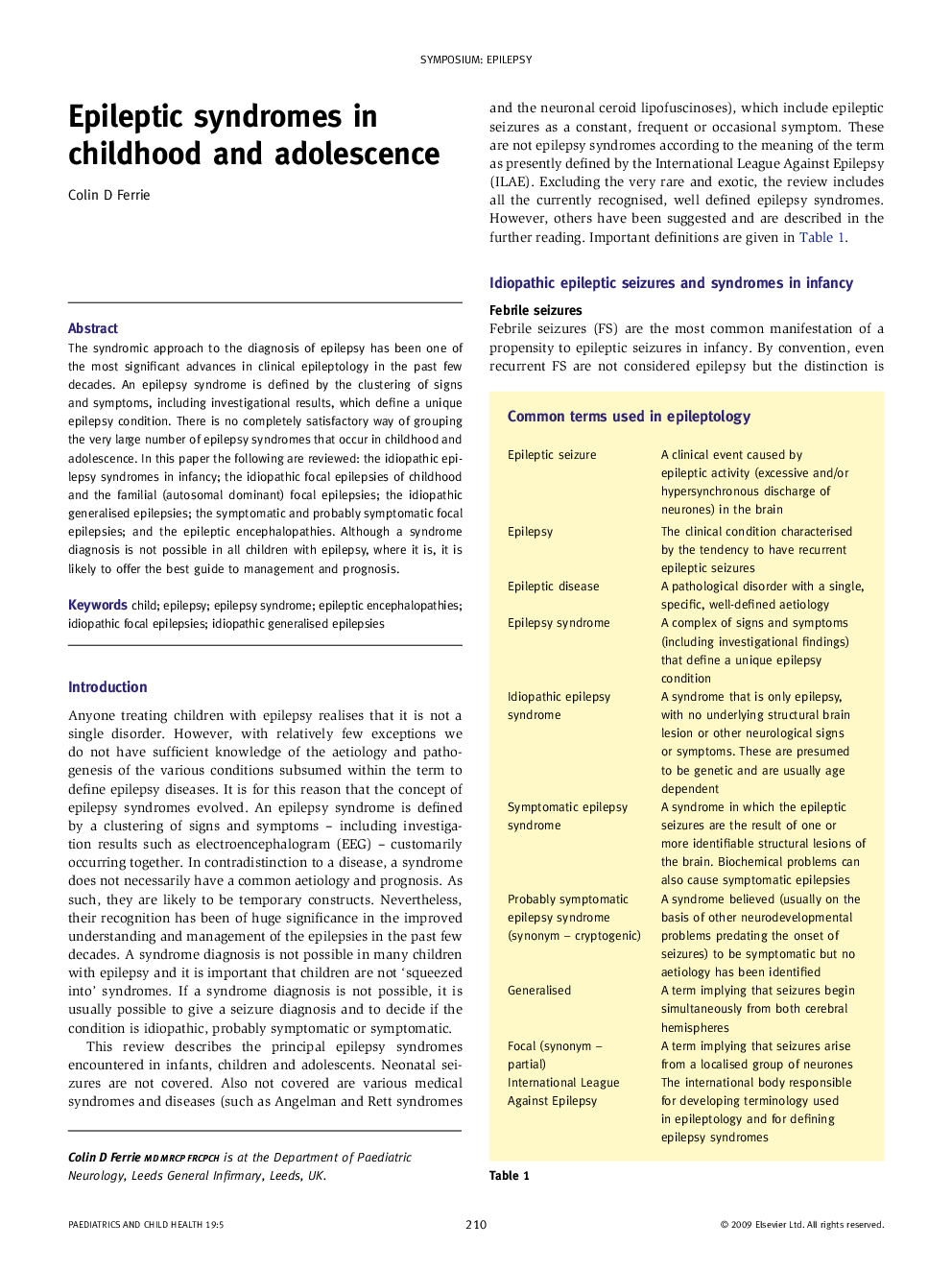| Article ID | Journal | Published Year | Pages | File Type |
|---|---|---|---|---|
| 4173310 | Paediatrics and Child Health | 2009 | 6 Pages |
Abstract
The syndromic approach to the diagnosis of epilepsy has been one of the most significant advances in clinical epileptology in the past few decades. An epilepsy syndrome is defined by the clustering of signs and symptoms, including investigational results, which define a unique epilepsy condition. There is no completely satisfactory way of grouping the very large number of epilepsy syndromes that occur in childhood and adolescence. In this paper the following are reviewed: the idiopathic epilepsy syndromes in infancy; the idiopathic focal epilepsies of childhood and the familial (autosomal dominant) focal epilepsies; the idiopathic generalised epilepsies; the symptomatic and probably symptomatic focal epilepsies; and the epileptic encephalopathies. Although a syndrome diagnosis is not possible in all children with epilepsy, where it is, it is likely to offer the best guide to management and prognosis.
Related Topics
Health Sciences
Medicine and Dentistry
Perinatology, Pediatrics and Child Health
Authors
Colin D. Ferrie,
